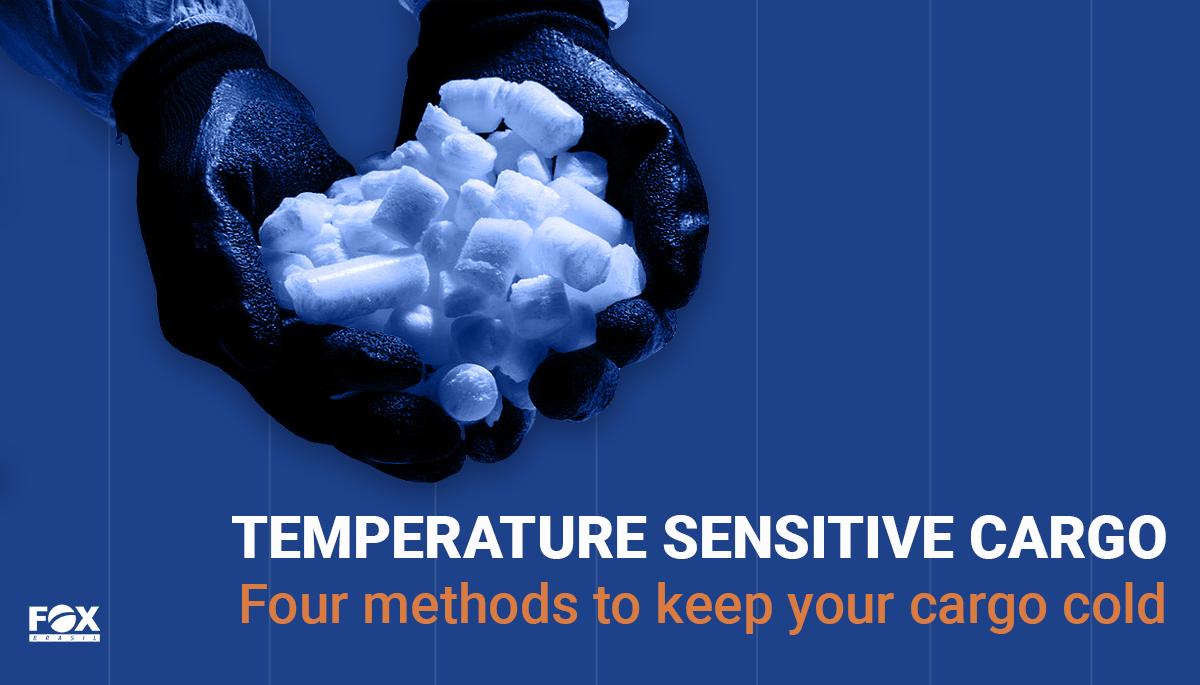Temperature Sensitive Cargo: Four methods to keep your cargo cold

Understand Logistics & Freight
Transporting cargo is a meticulous process, and when dealing with temperature-sensitive goods, an added layer of caution is needed. In this blog post, we will delve into four prominent methods utilized to keep cargo in cold temperatures: Dry Ice, Gel Packs, Reefer Containers, and the Envirotainer.
Dry Ice
Dry Ice is not your typical frozen water: It’s composed of frozen carbon dioxide, offering versatility in various applications. In terms of versatility, Dry Ice comes in different forms:
Pellets: Specifically designed for the food and beverage industry, these are ideal for smaller-scale needs and deliveries.
Slices: Thin, square pieces individually wrapped, perfect for airline and pharmaceutical goods.
Blocks: Robust and long-lasting, primarily used in industrial shipping for freezing purposes.
Dry Ice stands out as a widely popular temperature control method in both the food and vaccine industries due to its effectiveness in preserving temperature-sensitive cargo.
Gel Packs
Gel Packs, crafted from thermoplastic materials filled with water or polymer gel, emerge as a smart and cost-effective cooling solution, especially for shorter distances. These packs are sustainable, recyclable, and reusable, offering environmentally friendly options for cargo transport.
Unlike Dry Ice, Gel Packs are safer to handle, making them a preferred temperature control choice for various applications.
Reefer Containers
Reefer containers provide a dedicated solution for maintaining temperature-controlled environments during shipping. Equipped with integrated refrigeration units, they ensure precise temperature control throughout the journey. With versatile applications, they are suitable for a wide range of cargo, from perishable goods to pharmaceuticals, providing a reliable and consistent temperature control solution.
Envirotainer
Envirotainer takes air freight temperature control to the next level. Purpose-built for air freight, the preferred mode for temperature-sensitive cargo, it boasts cutting-edge technology. Equipped with heat and cooling technologies, enhanced air circulation, and rechargeable batteries, Envirotainer offers temperature flexibility.
Despite initial cost considerations, Envirotainer excels in efficiency, requiring less space and handling. It shields cargo from unforeseen events like delivery delays or abrupt temperature changes.
Selecting the right temperature control method is critical when transporting temperature-sensitive cargo. Each technique plays a vital role in preserving the integrity of goods during transportation, and the assistance of a freight forwarder can prove crucial in navigating these choices, ensuring that the selected method aligns with cargo specifications, industry standards, and the desired balance between cost and reliability.